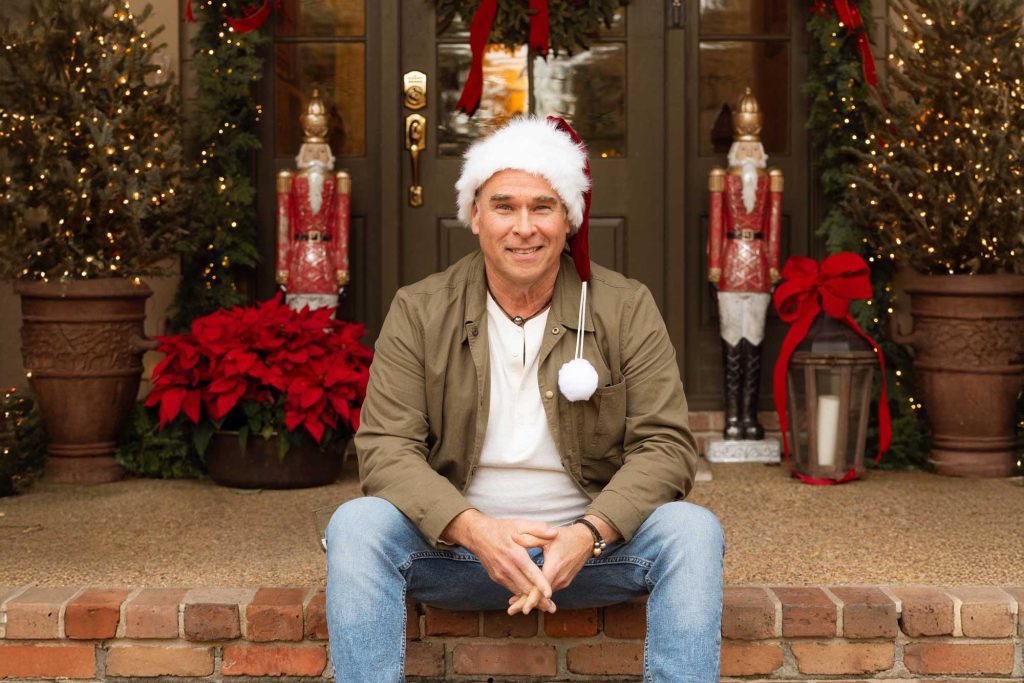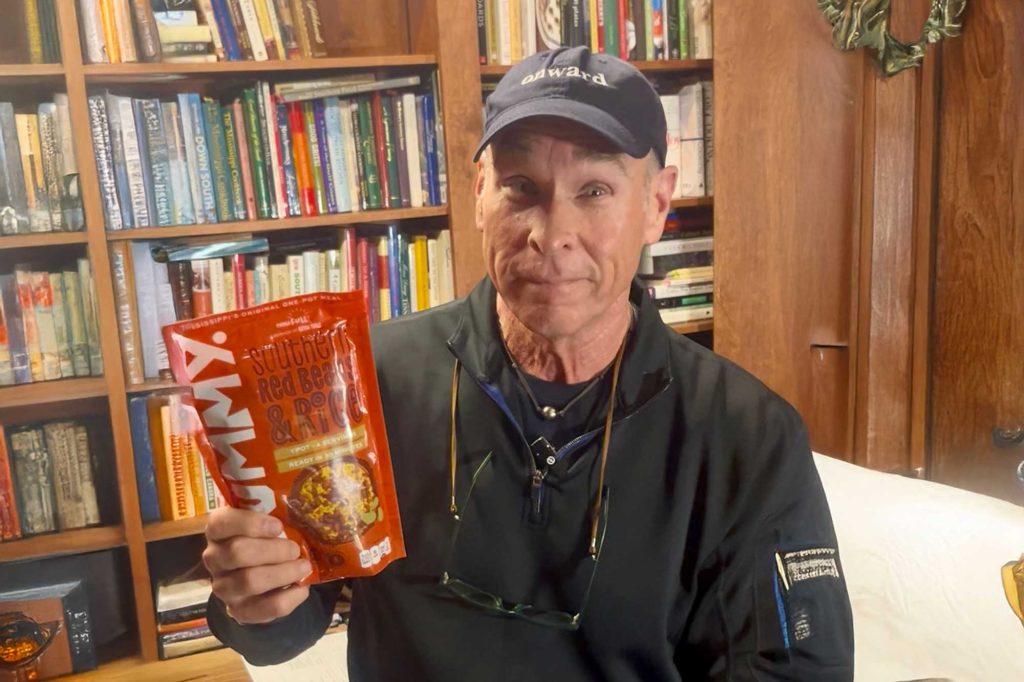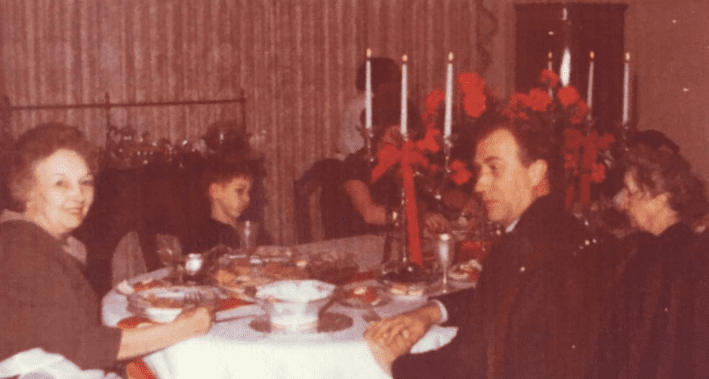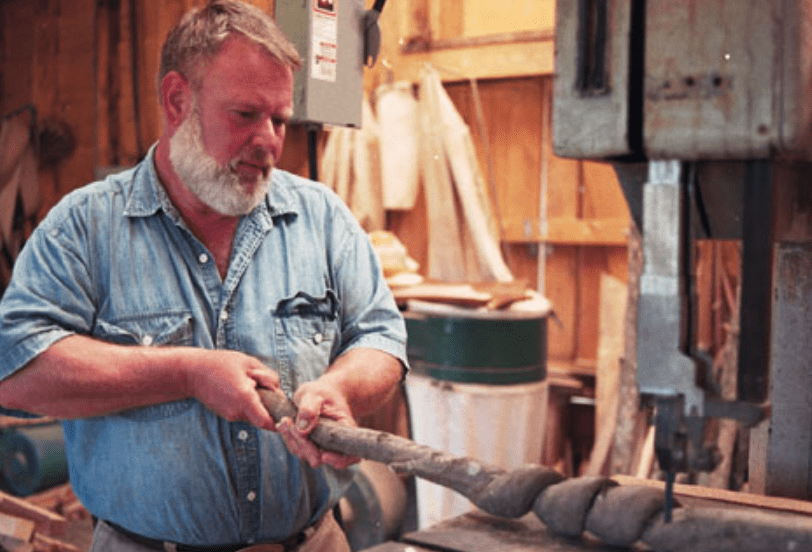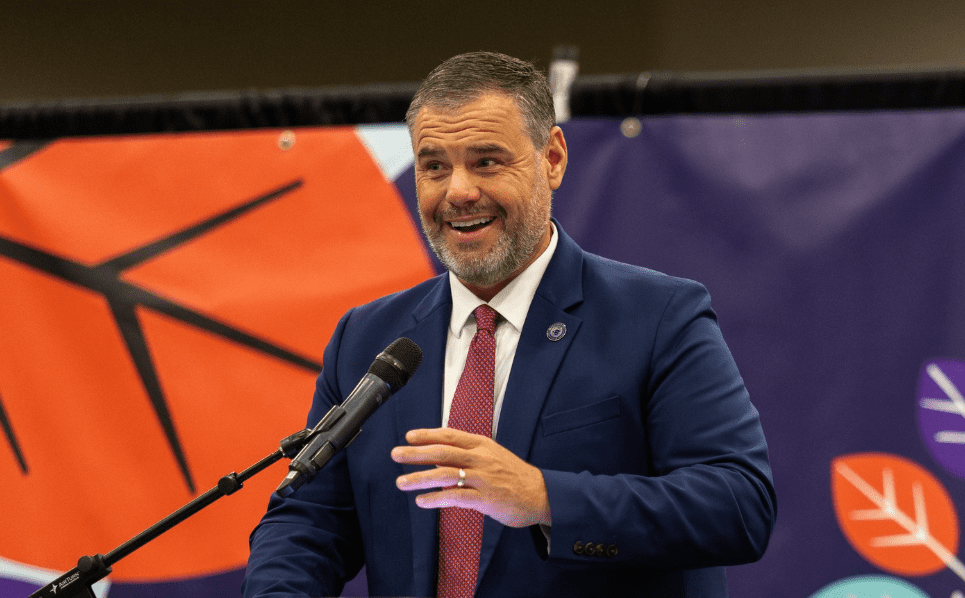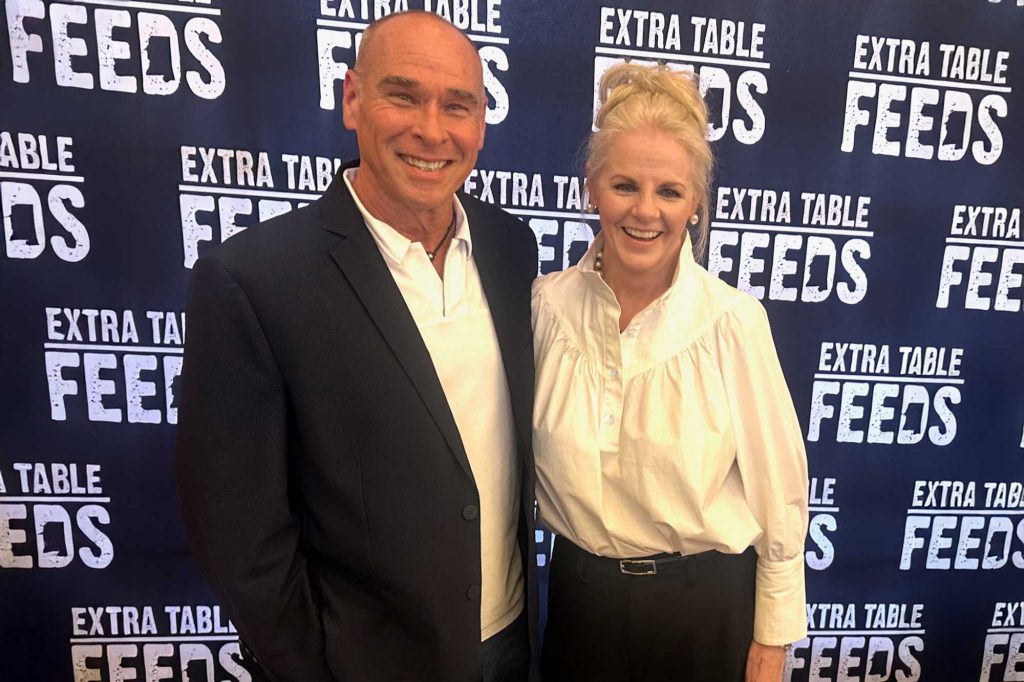
- Robert St. John says his wife reminded him recently that most of what lasts in life isn’t what we plan—it’s what grows around us while we’re busy working.
At six years old, I wanted to be Darrin Stephens from Bewitched. He worked in advertising, came up with ideas, pitched them, and got paid for it. That seemed like magic. Somewhere around my preteen years, I decided being in a rock ’n’ roll band was the ticket. For a while it was architecture, then radio. I even thought about directing movies. Every dream had one thing in common: creating something new.
Never once did I think of myself as a “creative.” That word always felt too slick for a guy who spent most of his life in restaurants. But looking back, that’s exactly what I’ve been doing. Every logo, menu, plate design, food feature, dining room layout, travel itinerary, and TV project started from an idea scribbled on a cocktail napkin, a legal pad, or somewhere in my head during a quiet drive — which explains a few of the bad ones. Turns out I never stopped creating — I just changed mediums.
That realization came last week when Jackie, a guest who’s been on eight of my trips and will be on her ninth in a few weeks, smiled and said, half-joking, “You’ve got to stop reminding me how much money I’ve spent with you.” Then her friend Pam jumped in: “But think of all the experiences we’ve shared.” She was right. Jackie wasn’t talking about hotels or meals. She was talking about moments.
I must be going through one of those late-life realization phases. It’s occurred to me that most of my career has been about creating memories—not for me, but for other people. Accountants help with numbers. Attorneys handle the tangles. Grocers feed the neighborhood. Plumbers and electricians keep life moving. Me? I guess I’ve been setting the table for moments that matter—birthdays, anniversaries, family dinners, and those long, laughter-filled nights in restaurants and on tours overseas that somehow turn into stories people keep.
That’s when it hit me again: I’m not just a restaurateur or tour host. I’m an “experience creator,” which sounds like something you’d find on a LinkedIn profile right before “motivational thought leader.” Really, all I’ve ever tried to do is make people feel welcome, feed them well, and give them a few hours worth remembering. Feed people, treat them right, pay attention, and mean it. That’s the whole playbook. Somewhere along the way I learned that when you care about people—staff, guests, or friends on a trip—they care back. That’s the exchange that keeps me in it. You don’t measure that in revenue or headcount. You see it in faces, in loyalty, and in the small moments that never make a spreadsheet.
Another guest once told me, “You realize you’re part of people’s biographies, right? You’ve become a small thread in the fabric of our lives.” I didn’t know what to say. It’s humbling to think about how much of my life’s work has slipped into other people’s stories—small moments that might get remembered long after I’m gone. I’ve watched it from the corner of a dining room enough times to know the best moments can’t be planned — they just happen when people feel at home. That’s enough for me. I’m just grateful I got to be there for a few of their good days.
All that talk about experiences and stories must’ve stirred something in me, because it reminded me of a test I took years ago that told me exactly what I was built for.
Three times, at three different churches over several years, I took one of those spiritual gifts tests. I didn’t even know such a thing existed. Each time, the result was the same: hospitality. At first, it felt like drawing the short straw. I’d hoped for something flashier—wisdom, leadership, maybe miracle worker. Nope. Hospitality. Figures. Not exactly the headliner gift, but it turns out it’s the one that fits.
It took a while, but it finally started to make sense. I’ve spent my life feeding people, welcoming them, trying to make them feel seen and cared for. That’s hospitality. Turns out, the test wasn’t telling me anything new. It just confirmed what I’d been doing all along.
It’s the business I’m in, but it’s also my purpose. And that word—purpose—still makes me flinch. It feels lofty. Like when people first called me a writer. Writers were the people whose books sat on my shelves—serious folks with important things to say. I didn’t see myself that way. But after 26 years, 1,300 columns, 15 books, and about 1.3 million words in print, I’ve made peace with it. Maybe not a great writer, but a working one. One who tells stories the way he speaks—plain and honest—with an overuse of commas and the occasional run-on sentence.
Same thing goes for creativity. I’ve accepted that too. These days, my restaurant work revolves around imaging, branding, design, menu creation, food development, and storytelling—all creative jobs. But what I enjoy most is collaboration. My wife and I were talking about that yesterday. I love building things with people. Not because I can’t do it alone, but because the shared process always makes it richer and more meaningful.
My wife reminded me recently that most of what lasts in life isn’t what we plan—it’s what grows around us while we’re busy working. I’ve never been much for five-year plans or mission statements. I just try to keep showing up, stay curious, and surround myself with good people. That’s worked better than any strategy I’ve ever written down.
If there’s a through line in all of this—from the kid who wanted to be Darrin Stephens to the guy running restaurants and hosting tours—it might be that the best things in life usually aren’t the ones we plan. They sneak up while we’re busy cooking, hosting, or just trying to make a living.
It’s funny how a career sneaks up on you while you’re just trying to make a living. Never expected to be in people’s stories. Never expected to spend decades in restaurants. Never expected to write well over a thousand columns. But here I am—still grateful, still showing up, still trying to get it right. And if you’ve been any part of that journey along the way—thank you.
All I ever wanted was to do good work with good people. Turns out that was the whole thing.
Onward.
This Week’s Recipe: Honey Bundt Cake
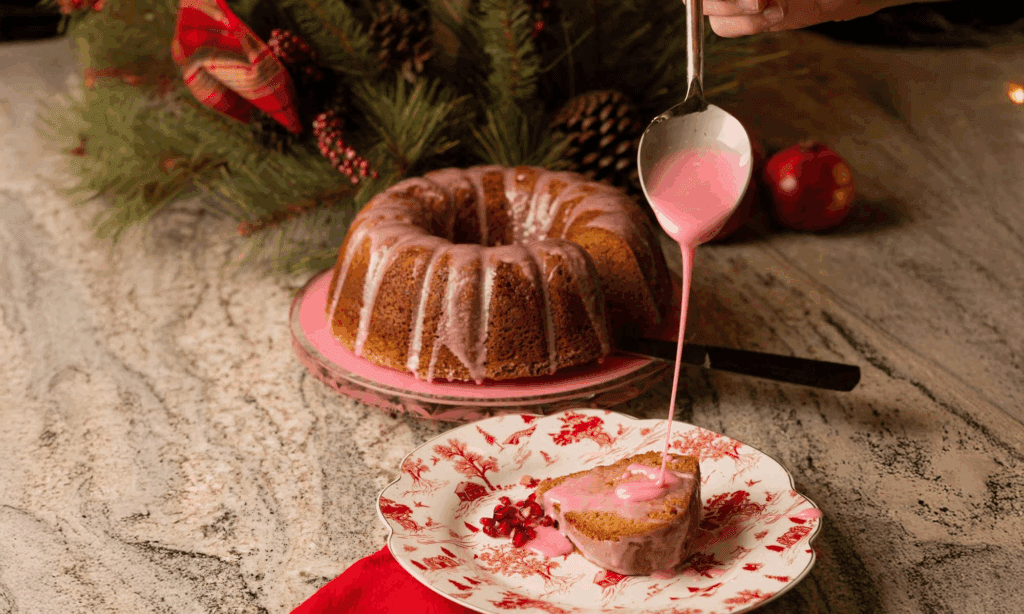
This bundt cake brings back memories of family gatherings on Bellewood Drive where sweets were as much a part of the celebration as the presents under the tree. The warm notes of cinnamon and honey make it a natural fit for holiday mornings or as the perfect finish to a Christmas feast. The pomegranate glaze adds a bright, tart finish that keeps things interesting. Make sure to grease every nook and cranny of your bundt pan thoroughly. Use butter and dust with flour for a clean release. Also, letting the cake cool for a solid twenty minutes before flipping is key to avoiding a sticky mess.
Ingredients
10 tablespoons unsalted butter, softened
½ cup light brown sugar, packed
¼ cup granulated sugar
4 large eggs
1 ¼ cups honey
2 teaspoons pure vanilla extract
3 cups all-purpose flour
2 teaspoons baking soda
1 teaspoon baking powder
¼ teaspoon salt
1 ½ teaspoons ground cinnamon
1 cup buttermilk
Pomegranate Glaze (for serving)
3 cups confectioners’ sugar
3 to 4 tablespoons pomegranate juice
Instructions
Serves 8 to 10
Preheat oven to 325°F
If using a stand mixer, beat the butter on high with the paddle attachment until light and fluffy. If not, place the butter in a medium-sized mixing bowl and beat on high until light and fluffy.
Add the brown sugar and granulated sugar to the butter and beat for one more minute.
Add the eggs one at a time, mixing well after each addition.
In a separate bowl, whisk together the flour, baking soda, baking powder, salt, and cinnamon.
Add the honey to the butter mixture and mix well.
With the mixer on low speed, alternate adding the flour mixture and buttermilk until fully incorporated.
Lightly butter and flour a bundt pan, making sure to cover all the crevices.
Allow the batter to rest for ten minutes before pouring into the pan. This helps the flour hydrate fully, leading to a more tender crumb. Pour the batter evenly into the prepared pan and bake on the center rack for 55 to 60 minutes. To test for doneness, insert a toothpick into the cake—it should come out clean.
Place the bundt pan on a wire cooling rack for twenty minutes before carefully flipping it onto a serving dish.
While the cake cools, prepare the glaze by mixing the confectioners’ sugar with the pomegranate juice, one tablespoon at a time, until the desired consistency is reached.
Drizzle the glaze over the cooled bundt cake and garnish with pomegranate seeds if desired.
Serve with a dollop of lightly sweetened whipped cream flavored with honey and vanilla for an extra touch of luxury. Store any unused portion of the cake in an airtight container.

